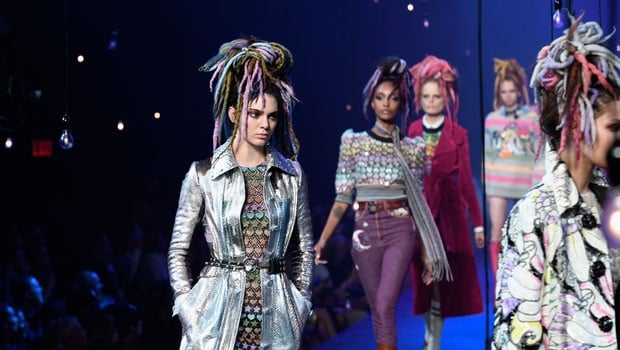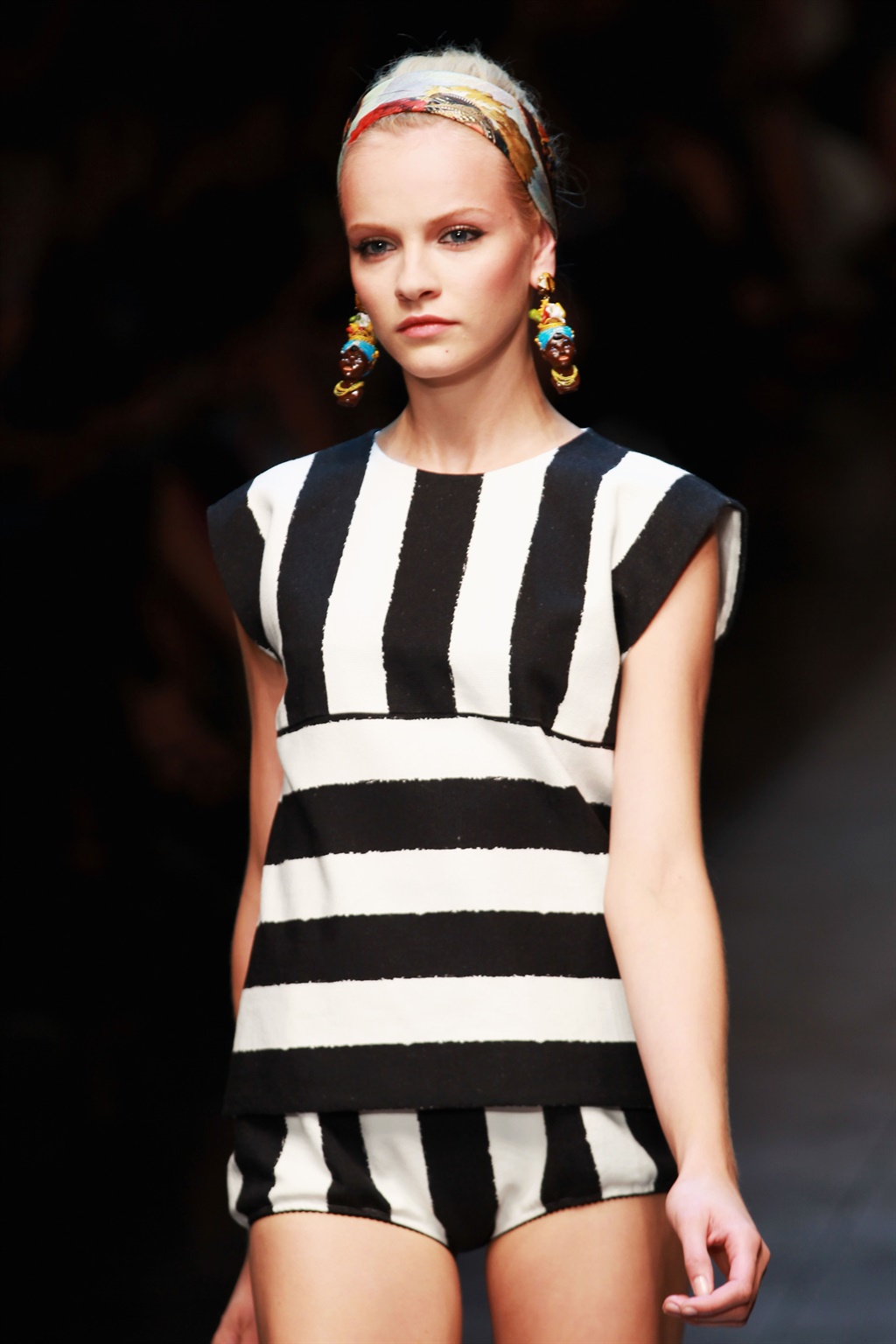
Single light-bulbs hanging from the roof sparkled in the faux night sky in what seemed like a magical world filled with infinite possibilities.
The Marc Jacobs's show at New York Fashion Week had editors and social media stars excited. Then, a predominantly white cast of models, including Gigi Hadid and Kendall Jenner, walked out sporting rainbow-hued, larger-than-life, wool dreadlocks that cascaded onto their shoulders.
Immediately social media was abuzz, accusing the designer of cultural-appropriation.
This is not the first time controversy has surrounded Jacobs. His 2015 Spring/Summer show saw white models in Bantu knots.
According to USA today the look for this year's show was inspired by the hair of film director Lana Wachowski. Other influences for this collection include club and rave culture and acid house.
A protective style, dreads have been synonymous with black pride and the Rastafarian religion. Yet, it has been surrounded by lots of controversy. Remember the Giuliana Rancic and Zendaya incident?
Rancic reinforced the perception many have that dreads are dirty, nonconformist and belonging to people who live on the fringes of decent society. A completely racist perception, of course.
The biggest issue here is, however, the fact that dreadlocks are such an obvious mainstay of black culture, yet Jacobs chose to plant this style on white model heads.
Employing predominantly white-washed casts of models for Fashion Week is, unfortunately, still a too regular occurrence. Most mainstream designers are guilty of this and it is continuing at an alarming rate.
Yet, of course, when fashion "inspired" by various cultures are displayed as such on an all-white army of beauties, it becomes even more evident how white the fashion world still is.
Whether it's a bevy of white models stomping to Beyonce's 'Formation' down the Aussie Fashion Week runway this year, or Dolce & Gabbana’s controversial usage of Blackamoor and slavery imagery (earrings above) in their Spring 2013 collection or Givenchy's cultural-appropriation of the Mexican "chola" girl look at its Autumn 2015 show - it's just not cool.
Now you'll get people who say: "Are we just too sensitive these days?"
My answer: The people who tend to say that we are over-sensitive are most likely those who have never truly experienced racial or cultural abuse or discrimination.
Because you've never experienced it, you think it's no big deal. It is to those who see their cultural roots plucked out to be used as a cool fashion thing of the moment by a predominantly white group of tastemakers. It is stolen and appropriated for consumption by those who don't know its true value or symbolic meaning.
To me, Jaleesa M Jones of USA nails it when she says: "And herein lies the issue: Black culture isn't deemed "sophisticated" or "fashionable" until it is co-opted by white tastemakers. It is one thing to engage in cultural exchange — fashion has made a practice of this, piecing together elements of different cultures to produce transcendent mosaics — but it's another to seemingly bypass aspects of one culture and then act as if whitewashing them somehow elevates them."
Images: Getty
Read more
W Magazine accused of lightening Willow Smith and Zendaya's skin
These are the 4 hairstyles students claim are banned at Pretoria High School for Girls




 Publications
Publications
 Partners
Partners
















